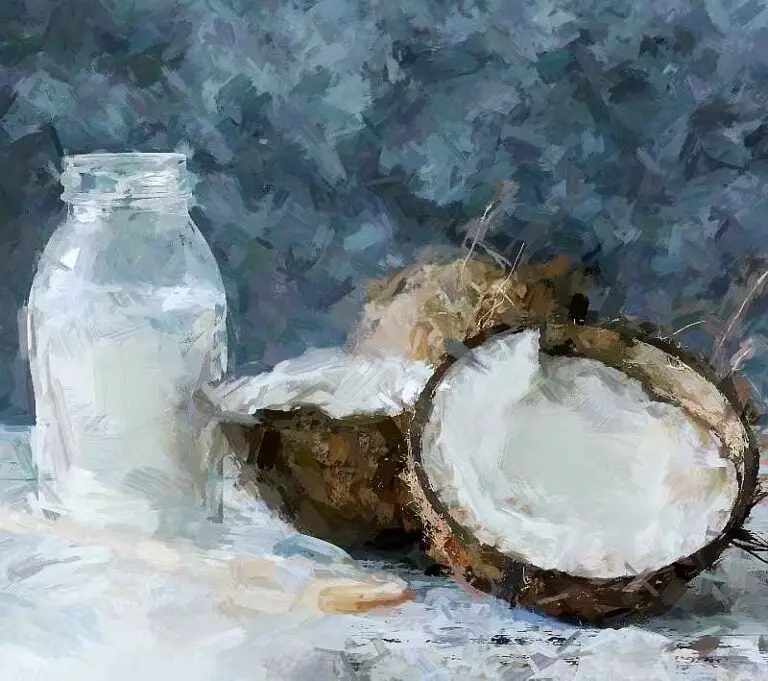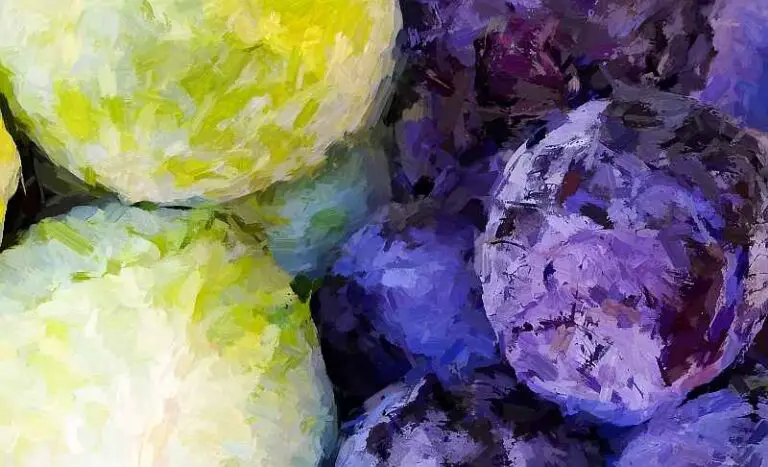Fermented Watermelon Rinds – 4 Recipes For The Whole Family
Fermenting watermelon rinds is an easy way to transform them into delicious food packed with benefits. Plus it’s zero waste. Good for us and for the Planet.
When eating a watermelon, it is quite normal to enjoy the juicy red pulp and discard the rinds because, well, it’s what the majority of us was taught to do.
BTW this is how to ferment the juice of the watermelon into soda, wine and vinegar!
But what if that waste were not at all necessary?
And what if we could use watermelon rinds in our recipes somehow?
The peel and the skin, which we usually throw in the bin, also happen to be the richest part of the fruit in mineral and vitamin content.
So, even though the red and juicy part of the watermelon is undoubtedly the tastiest to eat as is, the peel has been used for a long time in many recipes all over the world.
From dosa to curry, from jams to compotes, watermelon peels can be used ( almost ) everywhere.
They can obviously be fermented too.
So here we are sharing with you four different ways to ferment watermelon rinds.
And I assure you that at the end of it you won’t through them away anymore.
So let’s get started with choosing the right watermelon for our purposes.
Choose The Watermelon
Picking the variety is very easy: just use whichever you prefer to eat and it will be also fine to ferment.
When it comes to choosing what to keep and what to discard I recommend you throw anything that looks bruised or damaged.
This is quite important.
Watermelon peel is known to be pretty bland but it’s also known to absorb flavours incredibly well.
Obviously this applies to good and bad tastes, so if a part is bruised or smells strange chances are that the surrounding areas have too been “contaminated”.
So don’t just dig the damaged part out, instead cut around it with a good margin to make sure everything is removed.
Saving a few centimetres of peel is not worth ruining your future ferments.
Prepare The Peels
This step too is very straightforward.
First I would advise you to remove the outer green layer of the rind with a peeler because it’s tough and chewy.
In fact, even after fermentation its consistency can be quite hard and unpleasant.
But, if you are going through the famous “I can’t be bothered” phase of the fermie life, don’t worry, it won’t hurt you if you leave it on.
Obviously if you are using conventional ( aka sprayed ) fruits it is highly recommended to always remove the green part.
By doing so you will ingest fewer chemicals.
The way you cut and chop the watermelon rind is really up to you as there is no right or wrong way of doing it.
The only thing I would mind is the consistency of the peel itself as not every watermelon is the same.
Such consistency in fact becomes firmer as we move toward the outer part of the peel whilst it softens moving inward.
My preference is to either cut sticks that I will place vertically in the jar, or to chop the rind in pieces that I can comfortably accommodate in my container without too much hassle.
Usually 3cm by 3cm or 4 cm by 4 cm ( 1 inch x 1 or 1.5 x 1.5 )
But again, it’s up to you; don’t take these sizes as a must do.
Also, depending on how I intend to ferment the watermelon I will decide whether to completely remove the pinkish flesh or to leave it on instead.
I would, for example, remove it when making pickled rinds, but leave some on for rind granita recipe.
Salt Ratio
As mentioned above watermelon rinds are very good at absorbing flavours and that my friends includes salt.
Just as if we were to lacto-ferment any other fruit, here we need to use much less salt than we would for vegetables.
An amount far far away from to the salt concentration used in making pickled cucumbers.
Why?
Because if you don’t, you will soon find out how savouring pure salt tastes like; I speak from experience.
With that said and knowing that nothing in Nature is standard or homogenised, it is clear that every watermelon will absorb salt in a different way.
To stay on the safe side, in our kitchen, we never use more than 2.5% salt whether it’s a dry salting fermentation or a brine one.
Sometimes we do even less and use 2% salt.
Now I think the time to fill some jars has finally come, are you ready?
Let’s start with the easiest and quickest recipe.
RECIPES
Watermelon Rinds – DRY SALTED
I guess the name of the recipe already gave all the secrets away didn’t it?
Anyway, this is a very simple, quick and tasty way to use peels, so let’s just dive into it.
*** the recipe will work for any amount of rinds you are going to use ***
INGREDIENTS
- Watermelon rinds
- Salt
STEPS
- Remove the green skin but feel free to leave some of the pinkish flesh on
- Weigh the produce
- Roughly chop the rinds in 3-4cm ( 1-1.5 inch ) pieces and place them in a bowl
- Calculate 2.5% salt by weight ( salt=2.5% of the rind weight )
- Sprinkle salt over the rinds and mix well with your hands
- Take a jar and fill it up with the salted peels
- Seal it and let it ferment for 3-5 days at room temperature
TIPS
- If all of a sudden you see liquid in your jar that was not there before don’t panic, it’s absolutely normal.
It is the salt pulling the watery juice out of the watermelon itself.
- After the first 3-5 days have passed you can continue the fermentation process inside the refrigerator.
- If too salty quickly rinse the rinds under the tap before eating them or use them as is to prepare a refreshing water.
In the hot summer days we drink it all the time: it cools us down, gives us a lot of vitamins and minerals and it is a real blessing after a workout.
Here is what we do.
Join Our Community
Salted Watermelon Water
It literally takes more time to say it than to make it.
- Take as many pieces of salted rinds as you desire
- Crush them or blend them
- Add them to a bottle of cold water ( mineral or sparkling)
- Drink it, enjoy it and feel refreshed!
Alternatively, if you prefer the idea of eating the rinds over drinking them, you can proceed as follows.
Btw, this is what we usually do with our rinds to make them less salty when we don’t use them to prepare a refreshing water.
Drain the liquid ( but don’t throw it ) and substitute it with a pickling brine ( cold, not hot! ) made with 50% vinegar and 50% water.
If you like you can also add some sugar, herbs, spices and some of the salty brine you previously drained, then place the jar inside the refrigerator.
Wait at least a 2-3 days before tasting.
Fermented Rind Granita (to be)
Why “to be”?
Because this recipe is perfect to be turned it into a granita or a slushy but to do so you’ll need to add ice.
If you are not the granita type don’t worry, it is just as good eaten in other ways, so feel free to experiment.
INGREDIENTS
- Watermelon rinds ( with pinkish flesh on )
- Sugar
- Salt
STEPS
*** To make it easier for everyone and to be able to use this recipe for whatever amount of peels you have available use the following measurements.
1 teaspoon of sugar ( or 2 if you like it really sweet ) + 1 small pinch of salt for every cup of chopped watermelon rinds ***
- Finely chop your rinds
- Add sugar and salt ( following above guidelines )
- Place everything inside a jar and seal it
- Allow it to ferment for 3-5 days at room temperature
TIPS
If your room is quite warm make sure to unscrew the lid once a day to release CO2; don’t remove the lid, just loosen it until you hear a “fffssssssttt” sound then seal it again.
Once the first 3-5 days have passed place the jar in the refrigerator.
As the recipe name suggests, our most favourite way of eating this amazing fruit ferment is to blend it with some ice and turn it into a slushy.
We often add a couple of mint leaves and some berries and we really LOVE it.
But you can also use the granita mix to boost your daily smoothie or to make a slightly different version of the refreshing water recipe ( quick recipe above ).
If you take a tablespoon of it, add some extra sugar and pour it in a jar full of water you would make a wonderful yeast water to use as a starter for other fermented drinks.
We apply a similar process to make wild fermented ginger beer but use ginger in place of watermelon.
Fermented Watermelon Rind Juice
Another incredibly easy recipe and yet both delicious and healthy.
INGREDIENTS
- Rinds from 1 big watermelon
- 3L / 3 Qts of Water
- 8 tbsp of Sugar
- 2-3 pinches of Salt
- Starter ( optional )
*** If you desire in this recipe you can even leave both the pinkish flesh and the outer green peel on ***
STEPS
- Cut all watermelon rinds.
- Blend them with a little water, sugar and salt
- ( optional )Add 1-2 tbsp of sourdough starter or whey or a bug of your choice and stir
- Pour everything in a jar or carboy and seal
- Let it ferment for 48-72 hours at room temperature
- ( optional ) Filter the pulp out
- Bottle by adding 1 teaspoon of sugar per bottle and seal
- Let it ferment for 48-72 hours at room temperature
And now enjoy a fizzy and delicious refreshing soda that you can drink as is, mix with water or use in funky and original fermented cocktails!
TIPS
As it usually happens with this type of fermented drinks, like beetroot kvass or bread kvass, the pressure inside the vessel can be pretty high.
That is why I always recommend to use plastic bottles and to release some CO2 if and when they become really hard to squeeze.
Alternatively you could conduct this fermentation with an airlock.
If you happen to have an abundance of rinds you can skip the water entirely and ferment the pure and very delicious juice on its own.
It will be sooooo good.
Last but not least
Lacto-Fermented Watermelon Rinds – THE PICKLED
When ready these watermelon pickles won’t make you miss cucumbers, believe me.
Although consistency will obviously be different, the taste and the crunch will most definitely surprise you.
As we are going to lacto ferment the rinds it is advisable to remove as much pinkish flesh as possible in order to create a suitable environment for LAB to thrive.
If you are wondering why, the simple explanation is that watermelon flesh contains a lot of sugar that could interfere with the direction we want the ferment to take.
INGREDIENTS
*** Once again this recipe will work for any amount of peels you have ***
- Watermelon rinds
- Salt
- Water
- Fresh thyme
- Fresh chillies
- Fresh garlic
- Whole peppercorns
STEPS
- Remove the outer green peel and weigh the rinds
- Cut them into 3-4 cm ( 1-1.5 inch ) pieces and place them into a bowl
- Calculate 2.5% salt by weight and sprinkle it over the chopped rinds
- Mix well and massage the produce
- Slice the fresh garlic and the fresh chillies and add them to the bowl together with some peppercorns and thyme
By now you should see that some liquid has formed in the bowl, it’s 100% normal, don’t worry.
- Fill up the jars with the ingredient mix and include the liquid
- Press the rinds inside the jar and check if there is enough liquid to cover them
- If not prepare a 2.5% brine and add it to the jar until everything is submerged
- Weigh the peels down and seal the jar.
- Allow a 10-12 day fermentation at room temperature before tasting
TIPS
Once fermentation is completed place the jars inside the refrigerator for a long(er) term storage.
Or, if you desire, you can drain the brine and substitute it with a cold pickling one made with 50% vinegar, 50% water and a little sugar.
Then place the jars inside the fridge and wait a few days before eating your fermented AND pickled rinds.
And when they are finally ready why not pairing them with some fermented carrots?
The combination is delicious.
As always our recipes are not strict and should be considered more as guidelines than anything else.
Feel free to add, remove, modify and change as much as you desire to produce something you and your family are happy to eat and look forward to.
There would be no point in fermenting food you yourself don’t like just to stick to a recipe found online…
Take advantage of the ones we share with you and use them a springboard to begin your fermentation journey without delays.
Plus if you happen to know other cool watermelon rind recipes please share them with us and the community by leaving a comment below.
We are always very happy to learn more!
See you soon

Fermented Watermelon Rind Juice
Ingredients
- Rinds from 1 big watermelon
- 3 L of Water ( 3 Quarts )
- 8 tbsp of Sugar
- 2-3 pinches of Salt
- Starter optional
Instructions
- Cut all watermelon rinds.
- Blend them with a little water, sugar and salt
- ( optional )Add 1-2 tbsp of sourdough starter or whey or a bug of your choice and stir
- Pour everything in a jar or carboy and seal
- Let it ferment for 48-72 hours at room temperature
- ( optional ) Filter the pulp out
- Bottle by adding 1 teaspoon of sugar per bottle and seal
- Let it ferment for 48-72 hours at room temperature
- Move bottles to the refrigerator







